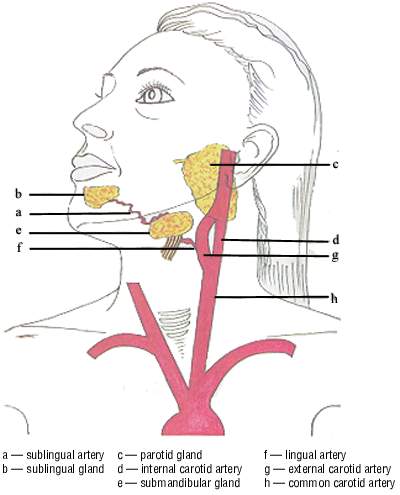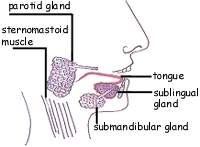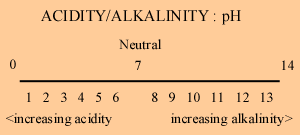Positive Health Online
Your Country

Sublingual Absorption
listed in colon health, originally published in issue 13 - July 1996
Sublingual, meaning literally 'under the tongue' refers to a method of administering substances via the mouth in such a way that the substances are rapidly absorbed via the blood vessels under the tongue rather than via the digestive tract. The route of absorption via the highly vascularised buccal mucosa allow the substances a more direct access to the blood circulation, thus providing direct systemic administration.
Medically, sublingual drug administration is applied in the field of cardiocascular drugs, steroids, some barbiturates and enzymes. It has been a developing field in the administration of many vitamins and minerals which are found to be readily and thoroughly absorbed by this method. Sublingually absorbed nutrition, which avoids exposure to the gastric system and liver, means direct nutritional benefits, particularly important for sufferers of gastro-intestinal difficulties such as ulcers, hyperactive gut, coeliac disease, those with compromised digestion, the elderly and invalids – the nutritional benefit is independent of gastro-intestinal influences.


There is considerable evidence that most sublingual substances are absorbed by simple diffusion; the sublingual area acting rather like litmus paper, readily soaking up the substances. However, not all substances are permeable and accessible to the buccal mucosa. The mucosa functions primarily as a barrier – similar to skin[1]. But while it was once believed that the barrier of human skin was 'impenetrable' it is now recognised that the dermis is a good site for the absorption of many substances (eg, vitamins E & C creams; hormones; nicotine patches) and it is a growing field of endeavour. Similarly the buccal mucosa presents an ideal site for absorption. This potential continues to be explored for the administration of many drugs – providing many useful studies and a better understanding of the modus operandi – although the benefits of the less intrusive nutrition therapies have had little opportunity as yet to be as thoroughly researched.
One of the best known drugs used regularly with great success is Glyceryl Trinitrate[2] – a potent coronary vasodilator which is used for the rapid symptomatic relief of angina. It has been found impressively effective when administered sublingually; pharmacologically active after only 1 – 2 minutes. The administration via an aerosol spray was found to provide rapid relief of symptoms, with first-class metabolism. The extent of first-class metabolism when compared to the sublingual spray decreased to 48% with sublingual tablets and 28% with the oral dose[3]. Following sublingual administration, nitrate appears in plasma . . . concentrations can be maintained for 24 hours[4].
Sublingual Verapamil[5] (a calcium channel antagonist prescribed for the management of angina, hypertension and certain supraventricular arrythmias) was effective in controlling the ventricular rate in 7 symptomatic patients and rapidly appeared in the plasma following sublingual administration. Experiments with some analgesics showed a many-times more rapid absorption from the mouth than the less lipid-soluble morphine. Impressive absorption has been attained with sublingual administration of desoxycortisone acetate, morphine, captoprill, nifedipine and 17-B Oestradiol – interestingly, it has also been shown that the sublingual administration of 17-B Oestradiol requires only 1/4 of the oral dose.
The Mechanics of Sublingual Absorption
The absorption potential of the buccal mucosa is influenced by the lipid solubility and therefore the permeability of the solution (osmosis); the ionisation (pH); and the molecular weight of the substances. For example, absorption of some drugs via the buccal mucosa is shown to increase when carrier pH is lower (more acidic) and decrease with a lowering of pH (more alkaline).
The cells of the oral epithelium and epidermis are also capable of absorbing by endocytosis (the uptake of particles by a cell as if by hollowly wrapping itself around it. These engulfed particles are usually too large to diffuse through its wall). It is unlikely that this mechanism is used accross the entire stratified epithelium. It is also unlikely that active transport processes operate within the oral mucosa. However, it is believed that acidic stimulation of the salivary glands, with the accompanying vasodilation, facilitates absorption and uptake into the circulatory system.
The mouth is lined with a mucous membrane which is covered with squamous epithelium and contains mucous glands. The buccal mucosa are similar to the sublingual mucosal tissue.
The salivary glands consist of lobules of cells which secrete saliva through the salivary ducts into the mouth. The three pairs of salivary glands are the parotid, the submandibular and the sublingual which lies on the floor of the mouth. The more acid the taste, the greater the stimulation of salivary output; serving also to avoid potential harm to acid-sensitive tooth enamel by bathing the mouth in copious neutralising fluid. With stimulation of salivary secretion oxygen is consumed and vasodilator substances are produced; and the glandular blood flow increases, due to increased glandular metabolism.
The sublingual artery travels forward to the sublingual gland, it supplies the gland and branches to the neighbouring muscles and to the mucous membranes of the mouth, tongue and gums. Two symmetrical branches travel behind the jawbone under the tongue to meet and join at its tip. Another branch meets and anastomoses with the submental branches of the facial artery. The sublingual artery stems from the lingual artery – the body's main blood supply to the tongue and the floor of the mouth – which arises from the external carotid artery. The proximity with the internal carotid artery allows fast access to its route supplying the greater part of the cerebral hemisphere.

Osmosis
In order for a nutrient to be effectively absorbed sublingually, it needs to be able to travel accross the buccal mucous membranes; by a process of diffusion known as osmosis which applies to all forms of absorption by the body; governing both intestinal and sublingual absorption. The distribution of water accross cell walls depends on the osmotic difference in the blood between the intracellular and extracellular fluid. The distribution of water across blood vessel walls is determined by the in-vivo osmotic pressure of plasma and the total outward hydrostatic pressure. Unlike the cell membrane, the capillary wall is freely and rapidly permeable to small molecules. The diffusion of water accross a membrane that is only permeable to water depends on the molecular weight of the particle. Small particles that readily dissolve in water, rarely present a problem in permeation and diffusion, and so are able to move freely between the tissues of the body. Active transportation into cells leads to rapid metabolisation of the substances. Molecules such as glucose (fructose) and amino acids are essential for cell metabolism and special mechanisms have evolved to facilitate their rapid diffusion and permeation accross cell membranes.
The Water of Life
Water is physiologically the most important component of the body; it is the medium in which all of the physiological activities neccessary for life take place. The properties of water greatly influence the digestion and absorption of lipids. Water molecules strongly attract each other because of the asymmetrical distribution of electrons within each molecule; the area of the oxygen atom has many electrons and hydrogen atoms have few electrons. Water is the major component of both the the interior of the cell and the extracellular fluid that surrounds the cell. A little over half the body water is inside cells. About 15 – 20% of the extracellular water is in the plasma. The remainder is held in the extravascular, extracellular and interstitial fluid.
Water is an excellent solvent. Because it is such a good solvent, it is the most abundant molecule of the body; most other molecules in the body are dissolved within the water molecules. Water is also an excellent carrier of small particles and is very readily permeable: it is absorbed passively, by osmosis.

An acid is a substance that releases a hydrogen (H+ ) ion. The base is the substance that combines with it. The H+ concentration is usually shown using the pH scale; a scale of numbers which expresses the acidity/alkalinity of a solution.
At pH 7 the solution is neutral – the acidity and alkalinity are balanced. The lower the pH, the more acid and the higher the percentage of H+ ions.
Ascorbic Acid
Ascorbic acid is the major antioxident in the aqueous phase of the body. It is readily dissolved in water and its naturally acidic nature in aqueous solution provides a naturally low pH for rapid and efficient sublingual absorption of both itself as Vitamin C and the other solutes carried with it. Ascorbic acid readily dissolves in water.
Sublingual Nutrition
The advantages of sublingually administering nutrients seem to be manifold, offering improved bioavailability and more rapid metabolisation of the nutrients which are absorbed more fully. It allows individual control over the dosage for optimium benefit, within safe guidelines, and can allow absorption in a palatable and easily administered form, regardless of gastro-intestinal difficulties. It is especially useful for those who experience difficulty in swallowing tablets. Sublingual nutrients are available in readily dissolved tablets, or in fine powders, which are held under the tongue or in the mouth, until dissolved. Water soluble vitamins are passively absorbed, by osmosis, and the vitamin molecules are massed in the micelles for transport across the mucosal membranes.
References
1 Squier CA, Johnson NW. Brit Med Bull, 31: 169 (1975).
2 Garibaldi M Kanig JL. Oral ther. Pharmacol, 1.440 (1965)
3 Vogt D, Trenk D, Jahnchen E, Phar-maco kinetic., Abt. fur Klin. Pharmak, Herz-Zentrum, Germany.
4 Bogeart MG, Clinical Pharmaco kinetics of Nitrates, University of Gent Medical School, Belgium.
5 Fort S, Lewis M, Luscombe D, John D Prelim. investig. of efficacy sublingual verapamil. 1994; 37: 460-3
Bibliography
1. Gray's Anatomy.
2. Florence AT Attwood D. Physiochemical Principles of Pharmacy.
3. Zilva JF Pannall PR. Clinical Chemisty in Diagnosis and Treatment.
4. Sinclair D, An introduction to functional anatomy.
5. Raynor J, Anatomy and physiology.
6. British National Formulary.
7. Harison RJ, Textbook of medicine
Comments:
-
Karen Robertson said..
I'm interested to learn if Ionic iron is easily absorbed sublingually? Or is it essential iron is absorbed via the gut?
I look forward to hearing from you.
Kind regards
K Robertson
(St Andrews, Scotland UK)